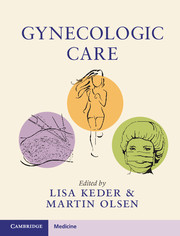Book contents
4 - Healthcare of Lesbian, Bisexual, and Transgender Patients
from Section 1 - Basic Gynecologic Care Issues
Published online by Cambridge University Press: 01 February 2018
Summary
Introduction
Sexual orientation for many women falls into a continuum. An individual may be homosexual, bisexual, or heterosexual in her orientation at different times in her life. The timing of the emergence, recognition, and expression of an individual's sexual orientation varies for each human being and does not appear to be determined by any particular factor or factors. (1) Sexuality has three general components: attraction, behavior, and identity. (2) Discrimination and prejudice based on sexual orientation have negative effects on the physical, psychologic, economic, and social well-being of the targeted individuals. (3)
Women who do not practice an exclusively heterosexual orientation frequently face obstacles in their day-to-day lives, including the acquisition of healthcare. This chapter describes the healthcare needs of lesbian, bisexual, and transgender patients and discusses the barriers to obtaining excellent healthcare faced by these patients. Several terms associated with lesbian, bisexual, transgender and questioning (LBTQ) patients are defined in Table 4.3.
Scope of the Problem
Not all women will disclose their sexual orientation to their healthcare providers. (4) Estimates vary, but data from the National Survey of Family Growth for 18–44-year-old women suggest that 1.3 percent of women identify themselves as lesbian while 2.8 percent of women identify themselves as bisexual; 11.2 percent, however, had experienced same-sex sexual behavior. (5) In a different study, 70 percent of women who have sex with women (WSW) described themselves as homosexual and 20 percent described themselves as bisexual; 10 percent chose “other.” (6) Exact prevalence estimates are therefore difficult to ascertain.
Barriers to excellent healthcare for LBTQ patients include patient concerns about confidentiality and disclosure, limited access to healthcare, health insurance discrimination, and a limited understanding by both patients and providers concerning the health needs of LBTQ individuals. While access to healthcare in the United States has recently improved, in the past lesbians were not allowed to participate in their partner's employment benefit packages in many US locations. Interestingly, a demographic analysis showed two-thirds of WSW had a university education compared to only half of the heterosexual women. Unfortunately, WSW had employment levels that were lower than corresponded with their education when compared to heterosexual women. (6)
- Type
- Chapter
- Information
- Gynecologic Care , pp. 27 - 38Publisher: Cambridge University PressPrint publication year: 2018



